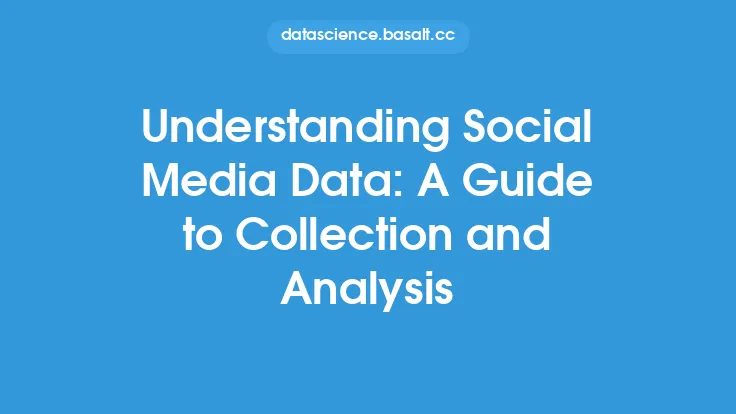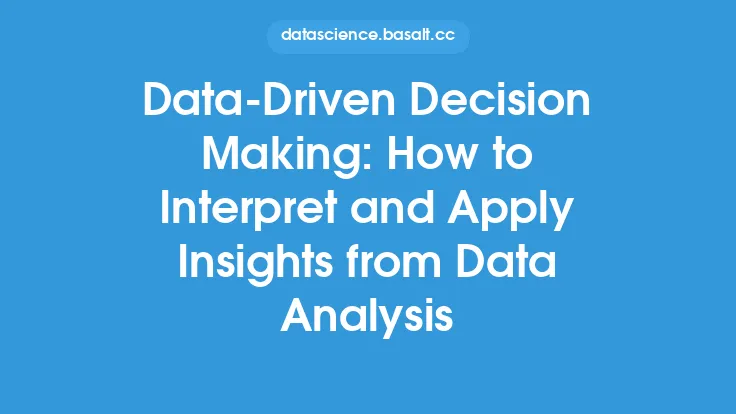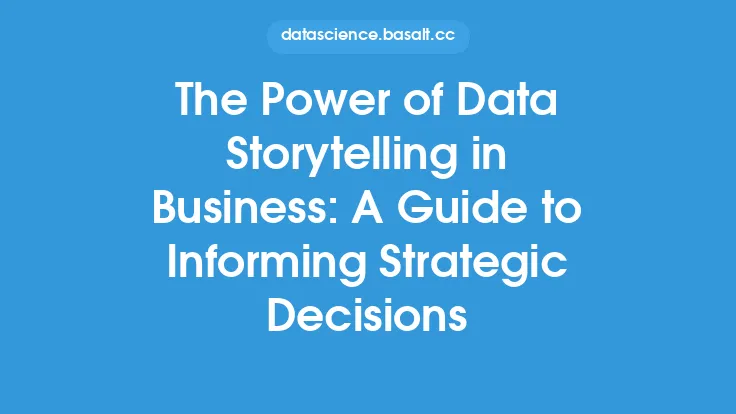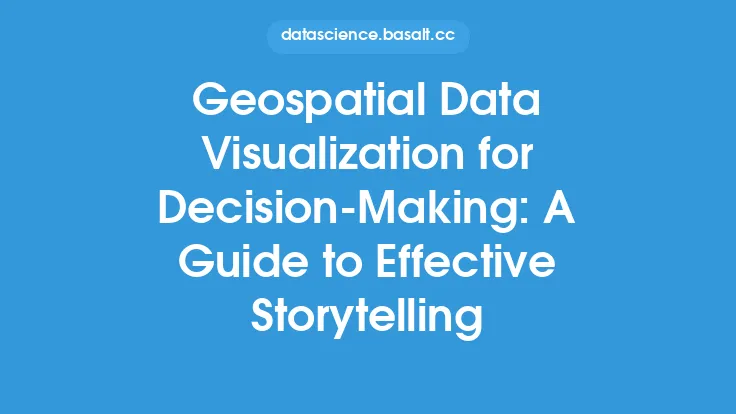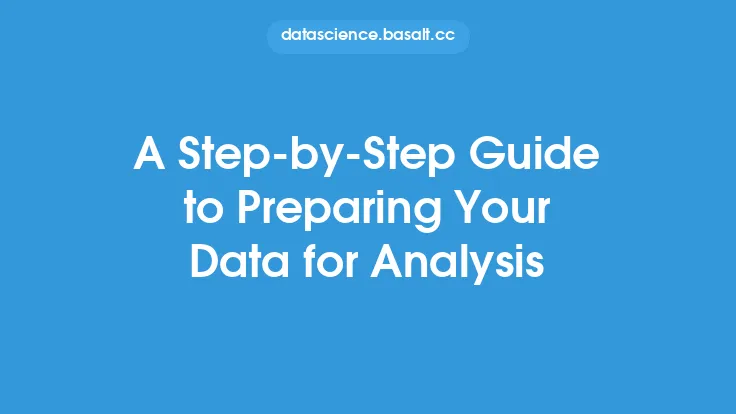In today's data-driven world, organizations are constantly seeking ways to turn their data into actionable insights that can inform decision-making. Effective data analysis is the key to unlocking the full potential of an organization's data, and it involves a range of skills, techniques, and tools. At its core, data analysis is the process of extracting insights and patterns from data, and it requires a combination of technical, business, and analytical skills.
Introduction to Data Analysis
Data analysis is a critical component of data-driven decision making, and it involves a range of activities, including data collection, data cleaning, data transformation, and data visualization. The goal of data analysis is to extract insights and patterns from data that can inform business decisions, and it requires a deep understanding of the data, as well as the business context in which it is being used. There are several types of data analysis, including descriptive analytics, which involves analyzing historical data to identify trends and patterns; predictive analytics, which involves using statistical models to forecast future outcomes; and prescriptive analytics, which involves using optimization techniques to identify the best course of action.
The Data Analysis Process
The data analysis process typically involves several stages, including problem definition, data collection, data cleaning, data transformation, data analysis, and results interpretation. The first stage, problem definition, involves identifying the business problem or opportunity that the data analysis is intended to address. This stage is critical, as it sets the direction for the entire analysis and ensures that the results are relevant and actionable. The next stage, data collection, involves gathering the data that will be used for the analysis, and it can come from a range of sources, including databases, spreadsheets, and external data providers. The data cleaning stage involves checking the data for errors and inconsistencies, and transforming it into a format that is suitable for analysis. The data transformation stage involves converting the data into a format that is suitable for analysis, and it can involve a range of techniques, including aggregation, filtering, and grouping. The data analysis stage involves applying statistical and analytical techniques to the data to extract insights and patterns, and it can involve a range of tools and techniques, including data visualization, machine learning, and statistical modeling. The final stage, results interpretation, involves interpreting the results of the analysis and communicating them to stakeholders.
Data Analysis Techniques
There are several data analysis techniques that can be used to extract insights and patterns from data, including data visualization, statistical modeling, and machine learning. Data visualization involves using graphical techniques to communicate complex data insights, and it can be used to identify trends, patterns, and correlations. Statistical modeling involves using statistical techniques to model the relationships between variables, and it can be used to forecast future outcomes and identify the factors that drive business performance. Machine learning involves using algorithms to identify patterns in data, and it can be used to classify customers, predict behavior, and identify opportunities for growth. Other data analysis techniques include data mining, which involves using automated techniques to extract insights and patterns from large datasets; text analytics, which involves analyzing unstructured data, such as text and social media posts; and sentiment analysis, which involves analyzing customer opinions and sentiment.
Data Analysis Tools
There are several data analysis tools that can be used to support the data analysis process, including spreadsheet software, such as Microsoft Excel; statistical software, such as R and SAS; data visualization tools, such as Tableau and Power BI; and machine learning platforms, such as Python and TensorFlow. These tools can be used to collect, clean, transform, and analyze data, as well as to communicate the results of the analysis to stakeholders. Other data analysis tools include data management platforms, such as data warehouses and data lakes; data integration tools, such as ETL (extract, transform, load) software; and big data platforms, such as Hadoop and Spark.
Best Practices for Data Analysis
There are several best practices that can be used to ensure that data analysis is effective and efficient, including defining clear goals and objectives, using high-quality data, and selecting the right tools and techniques. It is also important to consider the business context in which the data analysis is being used, and to ensure that the results are relevant and actionable. Other best practices include using data visualization to communicate complex data insights, using statistical and machine learning techniques to extract insights and patterns, and using data management platforms to support the data analysis process. Additionally, it is important to consider the ethical implications of data analysis, and to ensure that the results are used in a responsible and transparent way.
Common Challenges in Data Analysis
There are several common challenges that can arise in data analysis, including data quality issues, such as missing or inaccurate data; data complexity, such as large and complex datasets; and stakeholder expectations, such as communicating complex data insights to non-technical stakeholders. Other challenges include selecting the right tools and techniques, managing the data analysis process, and ensuring that the results are relevant and actionable. To overcome these challenges, it is important to have a clear understanding of the business context, to use high-quality data, and to select the right tools and techniques. It is also important to consider the ethical implications of data analysis, and to ensure that the results are used in a responsible and transparent way.
The Future of Data Analysis
The future of data analysis is likely to be shaped by several trends, including the increasing use of big data and analytics, the growing importance of artificial intelligence and machine learning, and the need for greater transparency and accountability in data analysis. Additionally, the use of cloud-based data analysis platforms, the increasing importance of real-time data analysis, and the need for greater collaboration and communication between data analysts and business stakeholders are likely to shape the future of data analysis. As data continues to play an increasingly important role in business decision making, the demand for skilled data analysts and data scientists is likely to grow, and the development of new tools and techniques is likely to continue.
